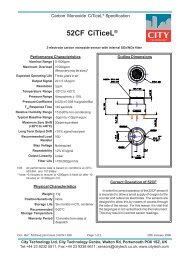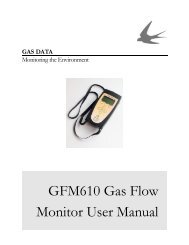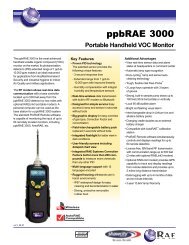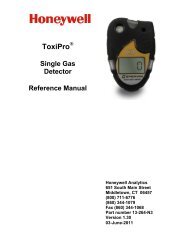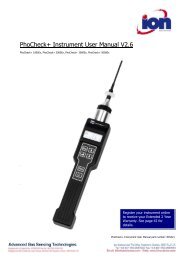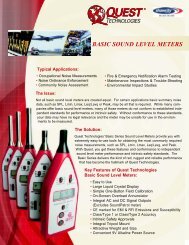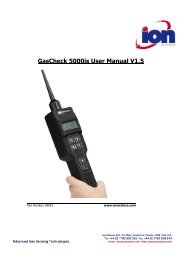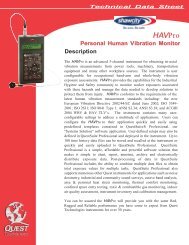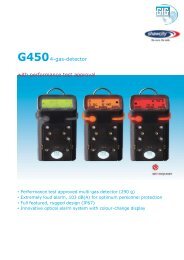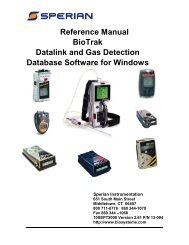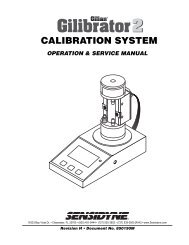Xgard Type 1 - Shawcity Limited
Xgard Type 1 - Shawcity Limited
Xgard Type 1 - Shawcity Limited
Create successful ePaper yourself
Turn your PDF publications into a flip-book with our unique Google optimized e-Paper software.
3. Operation<br />
English<br />
WARNING<br />
Prior to carrying out any work ensure local regulations and site procedures are<br />
followed. Never attempt to open the detector or junction box when flammable gas<br />
is present. Ensure that the associated control panel is inhibited so as to prevent<br />
false alarms.<br />
3.1a Commissioning procedure – toxic types only<br />
1. Open the junction box of the detector by unscrewing the lid in an anti-clockwise<br />
direction.<br />
2. Check that all electrical connections have been made and are correct as per Diagram<br />
5.<br />
3. Apply power to the detector and ensure the minimum supply voltage of 8 V dc is<br />
present at the ‘+’ and ‘-’ terminals of the detector.<br />
4. Leave the detector to stabilise for at least 1 hour, dependant upon sensor type.<br />
5. Connect a digital volt meter (DVM) to the test points on the amplifier PCB.<br />
Note: At the test points, Zero will read 40 mV = 4 mA.<br />
Full scale deflection will read 200 mV = 20 mA.<br />
Zeroing the detector<br />
6. Ensure you are in clean air. Adjust the ‘ZERO’ pot on the amplifier (which is accessible<br />
via a hole in the PCB cover) until the DVM reads 40 mV. Check that the control<br />
equipment display reads zero.<br />
Calibrating the detector<br />
7. Apply calibration gas (concentration should be at least 50% of sensor full-scale) to the<br />
detector at a flow rate of 0.5 - 1 litre/minute via a flow adaptor (Part No. C03005).<br />
Contact Crowcon for the supply of calibration gas.<br />
8. Allow the gas reading to stabilise (usually 30 to 60 seconds) and adjust the ‘CAL’ pot<br />
until the DVM reads the appropriate reading. To calculate the reading use the formula<br />
and example below:<br />
⎛ 160 ⎞<br />
×Gas 40 mV Setting<br />
⎝⎜<br />
Range ⎠⎟ + =<br />
Example: calibrating a 0-250 ppm carbon monoxide sensor using 150 ppm gas.<br />
⎛160<br />
150 40<br />
⎝⎜<br />
250 × ⎞<br />
⎠⎟ + = 136 mV<br />
12



